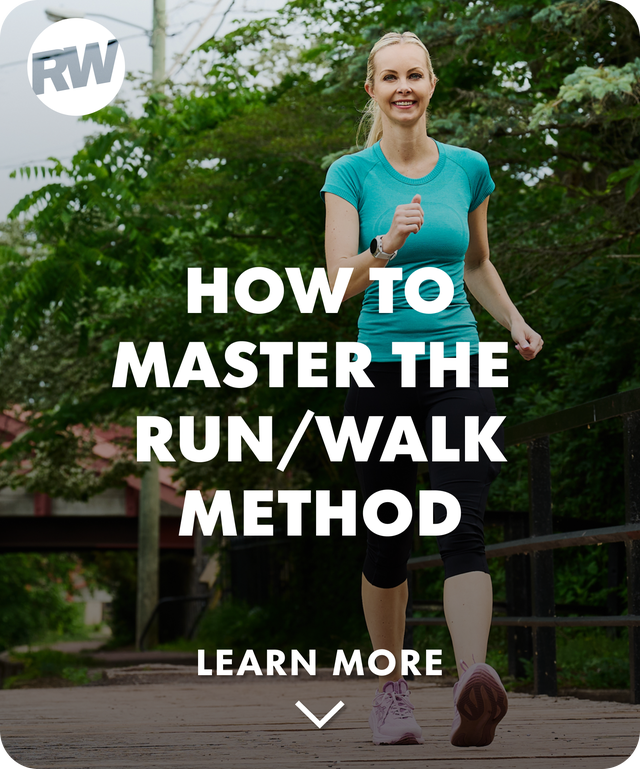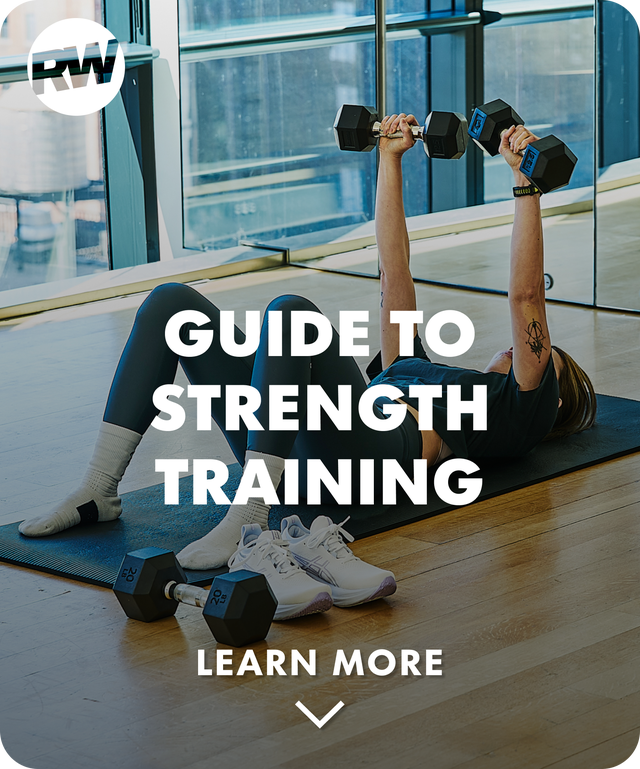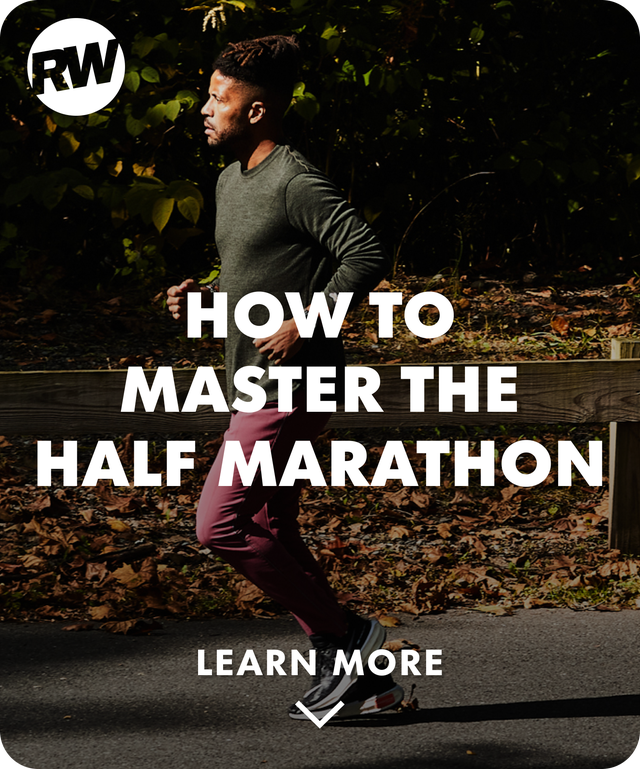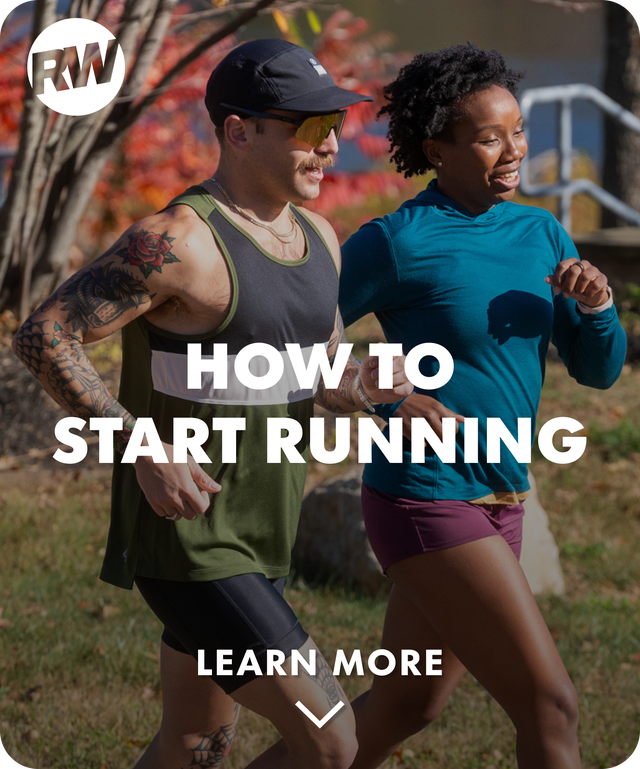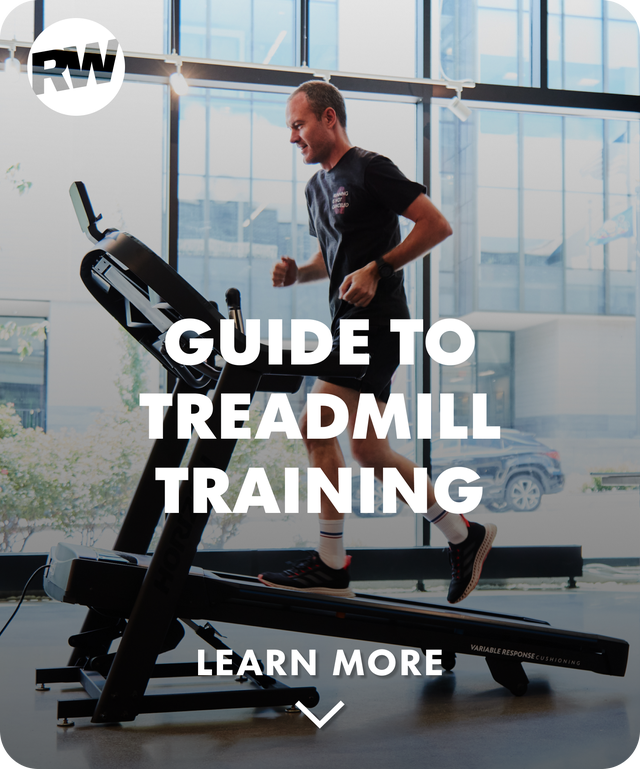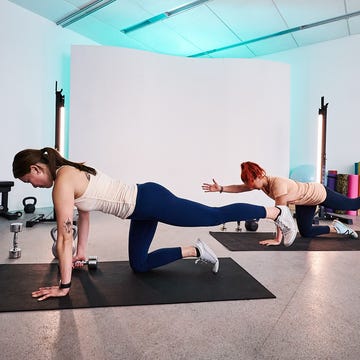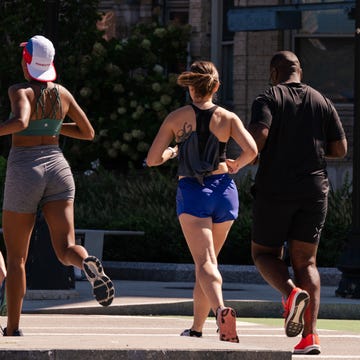Unlike interval training or a fartlek run, where your intensity varies every few minutes during the course of a workout, a tempo run is a speed effort during which you sustain a comfortably-hard pace for a continuous period of time—usually 20 to 30 minutes.
That doesn’t mean you treat a tempo run like you’re running a race, where your goal is to finish without any gas left in your tank. It’s a workout, and workouts are meant to prepare you for races, not become races. Translation: You want to finish feeling like you still have some effort left to give.
Elliott Heath, former professional runner and current head coach of the Bowerman Track Club Elite calls the tempo run “a distance and pace at which you feel like you can go one or two more miles.”
Here’s why tempo runs matter and how to do them right to maximize their benefits.
The Benefits of Tempo Runs
Tempo runs are a valuable training tool for milers, marathoners, and anyone in between. As race distances increase, your reliance on your aerobic energy system grows, which means your training consists of more endurance-building efforts like easy runs and long runs. A weekly tempo session complements that work perfectly—enhancing your aerobic base while working to elevate your anaerobic threshold.
One of the standout benefits of tempo running is improved efficiency. Running at a faster pace sharpens your form and running economy, helping you use less energy to cover the same distance. And when you run at your lactate threshold pace, you’re training your body to stave off fatigue, so you can run stronger for longer.
Heath believes the biggest benefit of tempo running is learning how to control your pace. Teaching your body to feel comfortable farther into the race helps you achieve a strong finish. “The more control that you have over a tempo session, the fuller that tank is going to be to really ramp it up and be competitive at the end of a race,” he says.
Tempo runs provide mental benefits as well. If you follow Heath’s advice—finish your tempo run feeling like you could have gone another mile—then you’re building confidence that you can run longer when tired. Then, when race day comes along, you’ll find yourself mentally prepared to find that extra gear and push yourself across the line.
3 Ways to Find Your Ideal Tempo Run Pace
When it comes to finding your tempo pace, there are a few routes you can take. Some are grounded in science, others rely more on how the effort feels to you. But before we get into the how, let’s clear up a common confusion about what tempo pace actually is—and how it differs from threshold pace.
You might have heard the terms “tempo run” and “threshold run” used interchangeably. While similar, they’re not exactly the same, but rather an “all squares are rectangles but not all rectangles are squares” scenario. Essentially, a threshold run is the ideal type of sustained tempo run but not all tempo runs are run at threshold pace.
Your anaerobic or lactate threshold pace is your body’s borderline between moderate- and high-intensity exercise. Sustaining a pace faster than your lactate threshold forces your body to produce more lactate in your blood than it can remove, causing that running-through-mud feeling of exhaustion. However, a tempo run right at this threshold pace is ideal for building speed endurance because your body learns to clear lactate quicker so you’re able to run faster for longer come race day.
Here are three ways to find your ideal tempo effort:
1. Go By Feel
Most coaches describe threshold pace as about a 7 or 8 on the rate of perceived exertion (RPE) scale of 1 to 10, in which 10 is all-out effort. You’re working hard, but you’re not gasping.
Traditional tempo pace, on the other hand, often sits a notch below threshold. According to Megan Roche, M.D., Ph.D., a Stanford-based clinical researcher, coach, and elite trail runner, most tempo runs should feel more like a 6 on the RPE scale.
You can determine your tempo pace without needing to calculate a bunch of numbers. For example, legendary running coach Jack Daniels says, in his popular book Daniels’ Running Formula, tempo pace should be an effort you can sustain for an hour-long race.
When Heath introduces a runner to tempo work, he offers two instructions before sending them out: At first, the pace might feel a little fast, however, you should finish the workout feeling like you’ve got another mile in the tank. It’s a refined way of viewing Daniels’ classic tempo philosophy, with an added emphasis on pacing with control.
2. Use a Previous Race Time
Finding your tempo pace based on a previous PR is pretty simple. Using a calculator like Daniels’ VDOT, you can enter your race distance and time, and it’ll give you corresponding training paces.
For example, if you finish a marathon in three hours, your threshold training pace will be about 6:29.
3. Track Heart Rate
When you do the VO2 max treadmill test, you’ll also discover your max heart rate. It’s a similar idea—the beats per minute of your heart when you’re running at your absolute peak intensity. And just like with VO₂ max, this number can help you fine-tune your training zones, specifically your tempo pace.
Tempo pace works out to anywhere from 70 to 80 percent of your max heart rate, or up to 90 percent for threshold, which means zones 3 to 4.
For runners who don’t know their max heart rate, here are a few ways to find it:
- Smartwatch: Again like VO2 max, most running watches provide you with an estimated max heart rate based on recorded training data.
- Chest strap monitor: For a more accurate read than a smartwatch, use a chest strap heart rate monitor.
- Hill repeat test: For a low-tech option, warm up, then run one-minute hill sprints until you physically can’t do another. Take your heart rate immediately after your final rep—that’s a solid estimate of your max.
- Quick formula: Subtract your age from 22o. This is not an exact measure by any means, and it’s best used when you need a rough estimate.
Remember, heart rate training isn’t about chasing perfection. It’s about building awareness and learning to recognize what comfortably hard really feels like so, come race day, you know exactly how to pace yourself.
How to Incorporate Tempo Runs Into Your Training
You should add a tempo workout to your schedule at least once a week. There are a few different ways you can do that, each of which provides the same benefits. Here are a few workouts to get you started. Make sure you properly warm up before jumping into these workouts. Things like dynamic stretches along with a mile or two at easy pace are great ways to get ready for a tempo run.
Classic Tempo Run
Why it works: A classic tempo run is setting out for a certain distance or time, ideally at anaerobic threshold pace. If you’re just starting out, you can try for 15 minutes, but Heath generally recommends a longer effort for his athletes.
As you improve, you can try different types of this classic tempo run. Heath says that might range from shorter, faster tempo runs under four miles to longer, slower tempo runs of 10 miles or more.
How to do it:
- 25 to 30 minutes OR 4 to 5 miles at tempo pace
Cruise Intervals
Why it works: Cruise intervals split up your tempo run into even chunks with rest in between. They’re a great choice for beginners who are trying tempo runs for the first time, but may have a tough time sustaining that comfortably hard pace.
That doesn’t mean cruise intervals are only for beginners. They give you a similar aerobic benefit that you would get from tempo runs, so even advanced runners can use them to shake up their normal routine.
How to do it:
- 2 x 1 mile OR 5 minutes at tempo pace (90 seconds rest, walking or jogging)
- 1 x 2 miles OR 10 minutes at tempo pace (90 seconds rest, walking or jogging)
Progression Run
Why it works: Progression runs are a great choice for marathoners. They’re longer runs that start at an easy pace and gradually work up to tempo pace. If your long run is 60 minutes, break it up into two 30-minute chunks: the first 30 minutes are easy, then progress from your easy pace down to your tempo pace over the course of the second 30 minutes.
“There is some semblance of control over a pace, no matter what distance you’re running, and the ability to progress off of that,” Heath says. “So with a tempo, it’s just important that it’s not the session to go out and hammer to see how much you can hang on.”
How to do it:
- 30 minutes easy
- 30 minute progression from easy to marathon pace
- 20 minute progression from marathon pace to tempo pace

Chris Hatler is the Deputy Editor of Esquire. He previously served as the Senior Editor of Men’s Journal and Features Editor of Popular Mechanics.
Matt Rudisill is an Associate Service Editor with the Hearst Enthusiast Group. A Nittany Lion through-and-through, Matt graduated from PSU in 2022 with a degree in journalism and worked in communications for the university's athletic department for the past three years as the main contact and photographer for its nationally-ranked cross country and track & field teams. Matt was also heavily involved in communications efforts for the Penn State football team’s 2024 College Football Playoff run as well as the Nittany Lion men’s basketball team’s 2023 NCAA Tournament appearance. In his role with Hearst’s Enthusiast Group, Matt contributes to both Runner’s World and Bicycling magazines, creating service content to benefit runners and cyclists of all ages. When he’s not out jogging, Matt can be found tweeting bad takes about the Phillies or watching movies.

